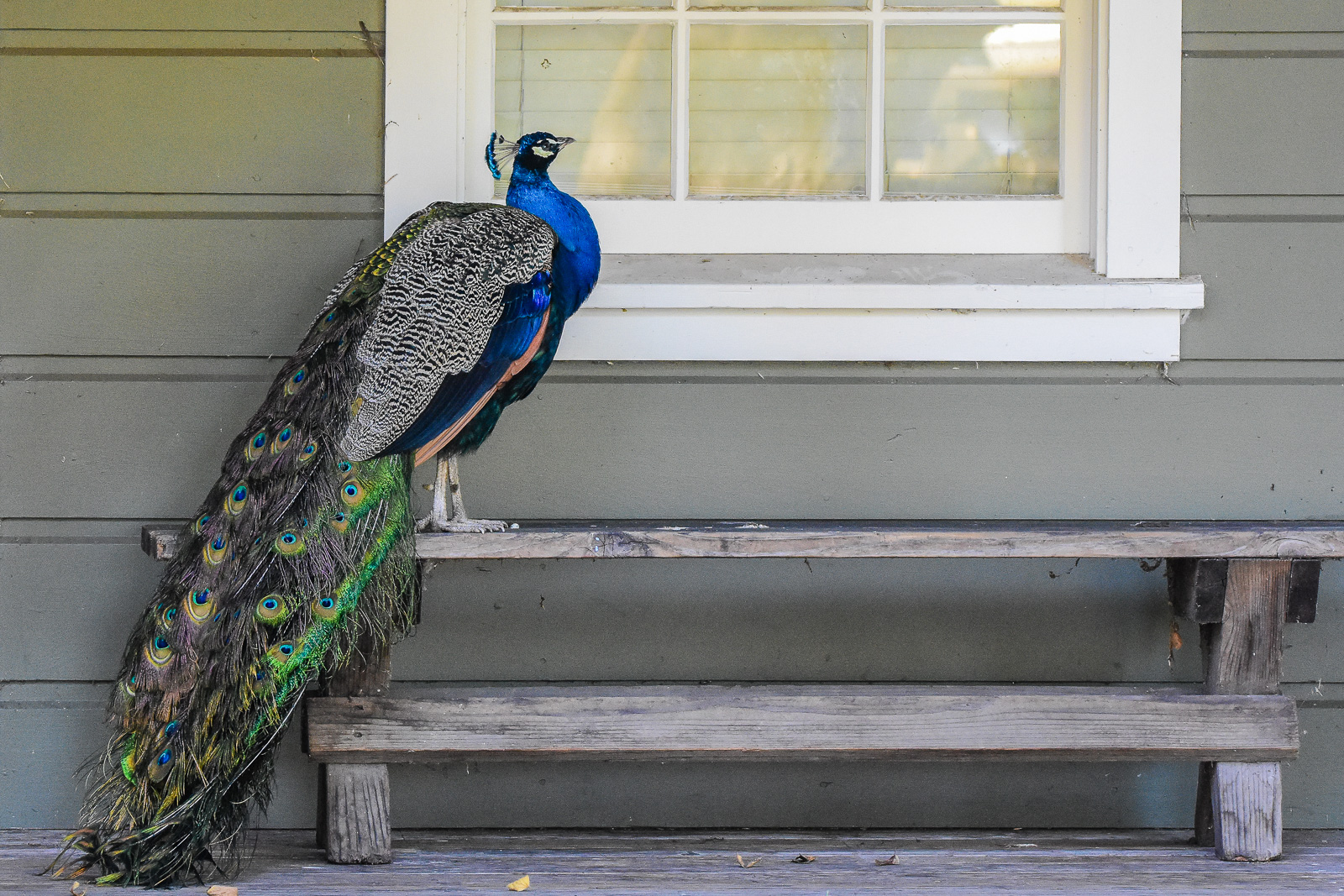"At first, the peacock, with his gorgeous train, demands our attention; but, like most of the gaudy birds, his notes are grating and shocking to the ear: the yelling of cats, and the braying of an ass, are not more disgustful." Letter XLIII. Sept 9, 1778. The Natural History of Selborne.
By the time I saw them again in Ardenwood Historic Farm in Fremont, my mind had long adapted to the idea of peacocks as domestic animals living in the xeric Californian landscape. Luckily, or not, I am yet to experience their "disgustful" voice.
My friend living on Oakland hills in a neighborhood with yard-raised peafowl would absolutely agree with this description by Gilbert White.
After celebrating Henry David Thoreau's 200th birthday several days ago, I want to mark another occasion today: the 200th anniversary of Jane Austen's death. Austen didn't mention birds much in her novels other than game birds for hunting and partridge for table. Yet Pride and Prejudice has been associated with the bird peacock because of beautiful cover designs. Jane Austen lived only a few miles from Selborne--there goes the connection to Gilbert White; therefore the peacock quote.
That peacock graces Austen's book covers is obviously not just due to its beauty. Somehow the connotation of an arrogant and strutting person has seeped into the English word. In the bird's native land of Indian subcontinent, I doubt that would be the case. It is the national bird of India.
My first encounter with peacocks in California was at a Buddhist monastery in Ukiah. Seeing them walking languidly among trees on which Acorn Woodpeckers made home, I was thrown off-kilter. As a blessed animal in Buddhist culture, the Indian peacock is featured in many stories, depicted as the mount for several bodhisattvas, and certainly a fitting part of a Buddhist menagerie.
By the time I saw them again in Ardenwood Historic Farm in Fremont, my mind had long adapted to the idea of peacocks as domestic animals living in the xeric Californian landscape. Luckily, or not, I am yet to experience their "disgustful" voice.
 |
| Male Indian Peafowl, Ardenwood Historic Farm, Nov 29, 2015, by Minder Cheng. |
Comments
Post a Comment